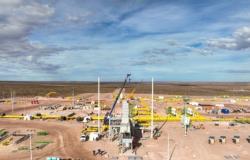The secretary of the Federal Court of Río Grande analyzed the precautionary measure to suspend the gas rate increase for 90 days issued by the judge, and analyzed the impacts when the judge resolves, in the coming days, the underlying issue.
The Federal Court of Río Grande, headed by Judge Mariel Borruto, makes significant progress in the substantive judicial analysis of the gas rate increase in Tierra del Fuego. This process is at a critical stage following the recent precautionary measure that suspends rate increases for a period of 90 days, at the request of the provincial government. Dr. Juan Vicente, secretary of the Court, provided details on FM Master’s about the impacts of this resolution and future steps in evaluating the underlying issue.
The Tierra del Fuego government filed an amparo action challenging two resolutions issued by the National Gas Regulatory Entity (ENARGAS) and the Energy Secretariat, which established the new tariff table reflected in recent invoices. Vicente explained that “the purpose of the trial is to analyze this request for revocation of these resolutions, that is what is being judged in the case in general.” To reach a final decision, it is necessary to open the trial and consider the opinions of all the parties involved.
Judge Borruto, in response to the provincial government’s request for a precautionary measure, ordered the Camuzzi company not to cut off the gas supply to avoid harming users while the precautionary issue was being resolved.
After receiving the responses from the national entities and the parties involved, the judge suspended the rate increases for the next three months. During this period, it is expected that a final resolution will be reached on the case.
In relation to the compensation for what has already been paid by users, Vicente clarified that the judge determined that this “still does not constitute sufficient urgency to deal with it now and we will deal with it at the end when we definitively resolve the case.” Thus, although the increased rates are not enforceable and users are not required to pay them, the return of amounts paid will be addressed later.
A particular situation that Vicente highlighted is that of those users with automatic debit, who, if they pay voluntarily, will not be able to demand the money back.
“The user can pay or can choose not to pay and wait to see what is resolved, in short, those are the options they have,” explained Vicente, indicating that there should be no generation of interest for non-payment due to the suspension of enforceability.
The main objective of the precautionary measure is to ensure that the effects of a possible sentence do not become abstract, that is, that the judicial resolution has a real and tangible impact on the affected population. Vicente compared this precaution to preventive detention in criminal matters, intended to prevent the accused from evading the judicial process.
The context of this case includes rate increases of between 700 and 1,000 percent from one month to the next, without changes in consumption, which Vicente described as “disproportionate and unpredictable.” This situation justifies the plausibility of the claim and the need for a precautionary measure to avoid unwanted consequences during the time it takes for the judicial process to reach a sentence.
In conclusion, judicial intervention in the case of gas increases in Tierra del Fuego seeks to balance the interests of users and supply companies, guaranteeing that any final decision has an effective and not merely theoretical impact. Judge Borruto’s next resolution on the merits of the matter will be crucial to define the future tariffs in the province.





